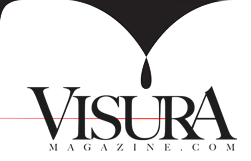
My father taught me about art. To him, spirituality and creativity were inextricably linked. Perhaps the essence of this project is an exploration of that connection.
From the beginning I was intrigued by church storefronts that were curtained and hidden but promised eternal life. I would write down the phone numbers of these churches; they would accumulate as little scraps on my desk, and one day I began calling them. This is one of the great aspects of photography: how it connects you to a world you do not know and can stretch your experience, while at the same time your subterranean self manifests in everything you create.
The first time I walked into one of these churches was on a photography assignment for a Canadian magazine. The church was called The Assembly of the First Born located in downtown Toronto. I loved the poetry of the name and found the same poetic quality in the names of many of the churches I later photographed.
When I first began this series, I would call churches and explain that I was working on a project exploring religion and the social aspect of church. After we discussed it, the committees and board members conferred and decided to either let me photograph, or not. If I received permission to come and photograph, I would go on a designated date. The pastor would usually announce my presence to the congregation, and I would add that I would only photograph people who wanted to be photographed.
When I began photographing in these churches, I worked slowly. I would sit, listen and observe, getting a sense of the repertoire and pace, letting people get used to my presence. Once I started shooting, I moved freely, getting close to people. I would stay with a group for a little while, working from various angles, trying to capture interesting relationships, juxtapositions, dynamics, and heightened dramas, within the larger scene. There is a performance in the way people move during a service, people would acknowledge the camera yet continue with full complicity, as a kind of dance between myself and the subject. Sometimes I would come with an assistant who would angle the flash from the side. We worked in tandem, linked by a long cord, becoming part of the spectacle.
There is little time for discussion with people during a service, so I depended on body language and other communications to know when someone did not want to be photographed. After photographing bathers in hot springs and bathhouses for 12 years, I became accustomed to the silent negotiation that occurs within private, sensitive situations. Patience and respect are key to the work. As photographers we forget how vulnerable people may feel by a camera and flash.
The world of church was different from anything I had ever known. I was always aware of being Jewish as part of my own inner dialogue, especially as Jesus was constantly evoked during these services, but rarely in the context of his Judaism. When I began photographing, there was an exotic, magical appeal. These small worlds within the large, fragmented city of Toronto surprised me. I immediately felt the social and physical warmth created by all the movement and activity, and a striking lack of boundaries between strangers. It was a vibrant, out-of-control atmosphere, one I had never seen before. People were encouraged to release emotion, they acted as players on a stage and at times as something more primal…for me this was cathartic.
At the same time I was suspect of church teachings and had contrary views to many of the values they preached. From the beginning this contradiction was there: on one level the community relationships, the solid social bonding and the physical display of spiritual passion; on another the authoritarian structure of the church with its deeply-rooted hierarchy and dogma, its prejudice against gays and women and its inability to allow questioning or change. I tried to psychologically evoke both of these concepts in my photographs; an empathetic physicality and a darker, more critical tone. The idea of photographing the intangible was at the core. I tried to photograph transcendence without romanticizing it; the slipping from the rational world to the unknown was something that was both captivating and elusive.
These photographs were taken in Pentecostal, Baptist and other churches that are known for physical, movement-oriented ritual. I selected these groups as a metaphor for the aspect of all religions, which promise a fairy tale, and require surrender to the unknown from their practitioners; the human need for transcendence seems innate. Religion provides a construct in which people attempt to claim this experience. I felt it was important to try and photograph these intangible, elusive moments of personal surrender and what I perceive to be dangerous ideologies. At times I felt like taking a shower after hearing hateful ideas disguised as morality, yet at other times, I felt myself seduced by a service or a sermon. This project is an attempt to raise these contradictions and the questions that they pose.
www.ruthkaplanphoto.com





